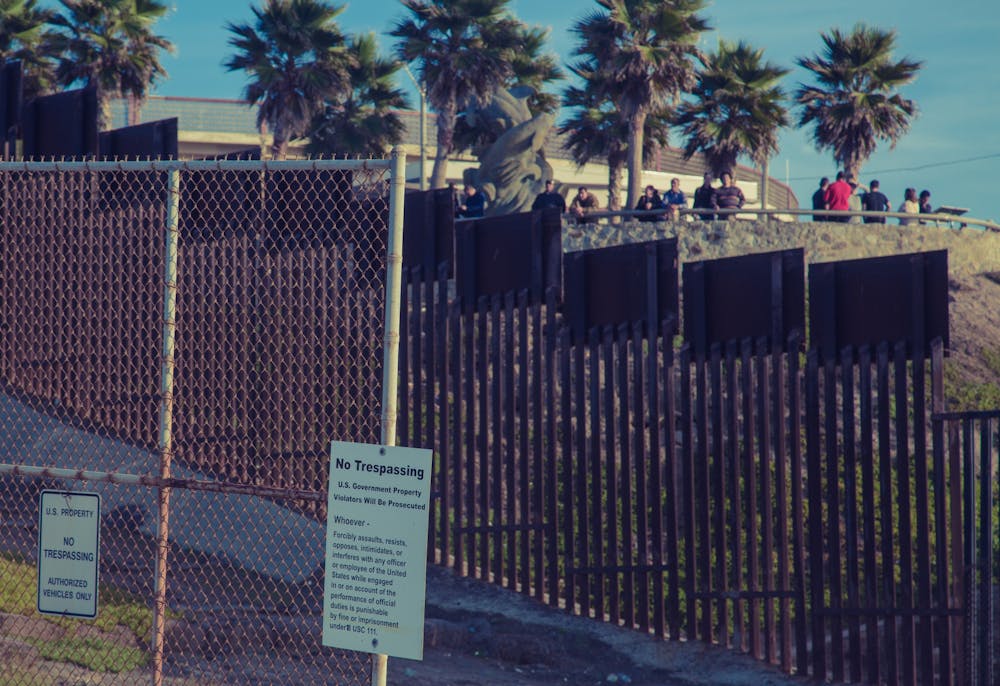The Biden administration has taken the initiative to roll back cruel Trump-era policies, expedite the processing of migrants and make material conditions of the undocumented population more bearable. Nonetheless, the overwhelming approach laid out by the White House still endorses law and order deterrence: The proposed budget for Immigration and Customs Enforcement (ICE) has increased for the fiscal year 2022 and a strategy to discourage immigration from the source is being pursued.
“Do not come," warned Vice President Kamala Harris in early June to migrants in Guatemala. Harris’ statement is eerily reminiscent of the previous administration’s “Remain in Mexico” Migrant Protection Protocols (MPP) rhetoric. As per MPP policy, asylum seekers arriving at the southern border could be sent back home to await their turn in immigration courts.
The recycling of this approach is often seen, but deterrence has ultimately proven itself ineffective time and time again.
In April 2017, U.S. Customs and Border Protection (CBP) enacted a pilot program authorizing the separation of families attempting to cross the southern border. The White House chief of staff at the time, John Kelly, stated that this change was considered “to deter more movement along this terribly dangerous network.” Contrary to the administration’s intentions, there was an increase in the number of families apprehended by authorities in the beginning months of this program.
If these policies were intended to discourage migration, the numbers tell a different story. Surprisingly, CBP reported an uptick in encounters from 2016 to 2018 during the Trump term. Even when considering the possibility that more aggressive tactics may have been employed to apprehend migrants, it is telling to see the number of encounters doubled from 526,901 to 1,148,024 during the transition to and first two years of the Trump administration.
In other words, regardless of the Trump administration’s employment of MPP and strict protocols, the fortification of the southern border did not deter migrants from attempting passage: It just made the trek more dangerous.
However, deterrence policy is not exclusive to physical passage. Since migrants are able to endure the trek, administrations have resorted to guarding refugee status more harshly. During the Trump presidency, quotas for asylum seekers were lowered, despite more migrants filing for defensive asylum. Consequently, as the number of applicants increased, the number of admitted refugees only declined.
Of course, this does not mean a deterrent policy is responsible for promoting border crossing. Rather, these statistics show that even the strictest, most inhumane treatment was unsuccessful in mitigating unauthorized immigration. Both the push and pull factors for migration outweigh the injury caused by deterrence policy.
Therefore, we must view the border crisis from a different reference frame if we recognize the current status quo as unacceptable. The U.S., itself, is inarguably and understandably an extremely strong, constant pull factor. The U.S. should reform the current immigration system to account for this by providing more accessible paths to Lawful Permanent Resident (LPR) status.
Legalization is by no means “radical.” We’ve done this before through the Immigration Reform and Control Act (IRCA) in 1986, signed by President Ronald Reagan. IRCA, through a general legalization program, gave undocumented immigrants residing in the U.S. between 1982 and 1986 a path to legal permanent residence. 2.7 million people were granted LPR status, 1.6 million of which were originally undocumented.
In the 21st century, the narrative guiding immigration policy and the way American society views migrants has been incredibly divisive. Many U.S. officials, most notably President Donald Trump and other Republicans who ran during the 2016 primary, have campaigned on the premise that all undocumented immigrants should be deported.
Ironically, fulfilling their campaign promises would actually hurt the economy. Swinging the pendulum in the opposite direction, the deportation of all undocumented immigrants would cost somewhere between $400 to $600 billion to facilitate, reduce the real Gross Domestic Product by $1 trillion and cause a labor decline due to a shortage of workers.
Undocumented immigrants already contribute 8% of their incomes, more than $11 billion total, to state and local taxes per year, according to a 2017 study conducted by the Institute on Taxation and Economic Policy. If granted legal status under an immigration reform plan, they could contribute up to a total of $13.1 billion, with states like Texas, California and Georgia reaping increases over $100 million.
In the long term, immigrants stimulate the economy and do not cause wage stagnation, nor do they steal jobs. The repeated claim that undocumented migrants are criminals is also fictitious, considering their conviction rate is 45% lower than native-born Americans.
So the question remains: Why is America so resistant to giving those who desperately want to be American an easier means to do so? Why is deterrence our accepted default? The answer gives light to a clear, unspoken definition of who is considered acceptable in America.
It’s a rather uncomfortable reality, but an unavoidable lived experience for many immigrants and children of immigrants in the U.S., including Vice President Harris. The Biden administration must re-engineer America’s immigration system to recognize this in-built perception that affects all immigrants, rather than simply re-bottling the broken status quo.
Anju Felix is a junior from Port Murray, N.J. studying Neuroscience, Political Science and Harp Performance. She is the Opinions Editor for The News-Letter.





